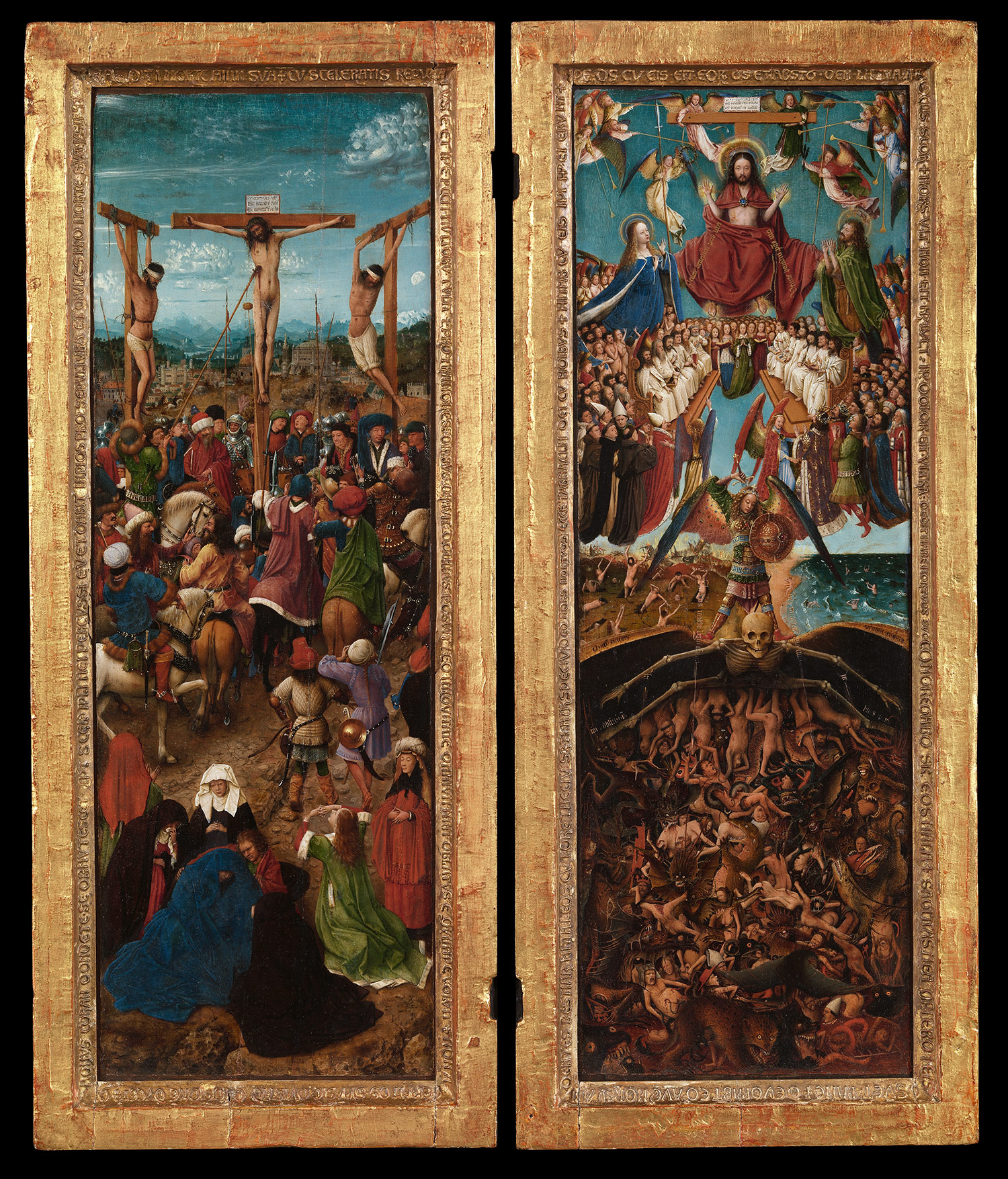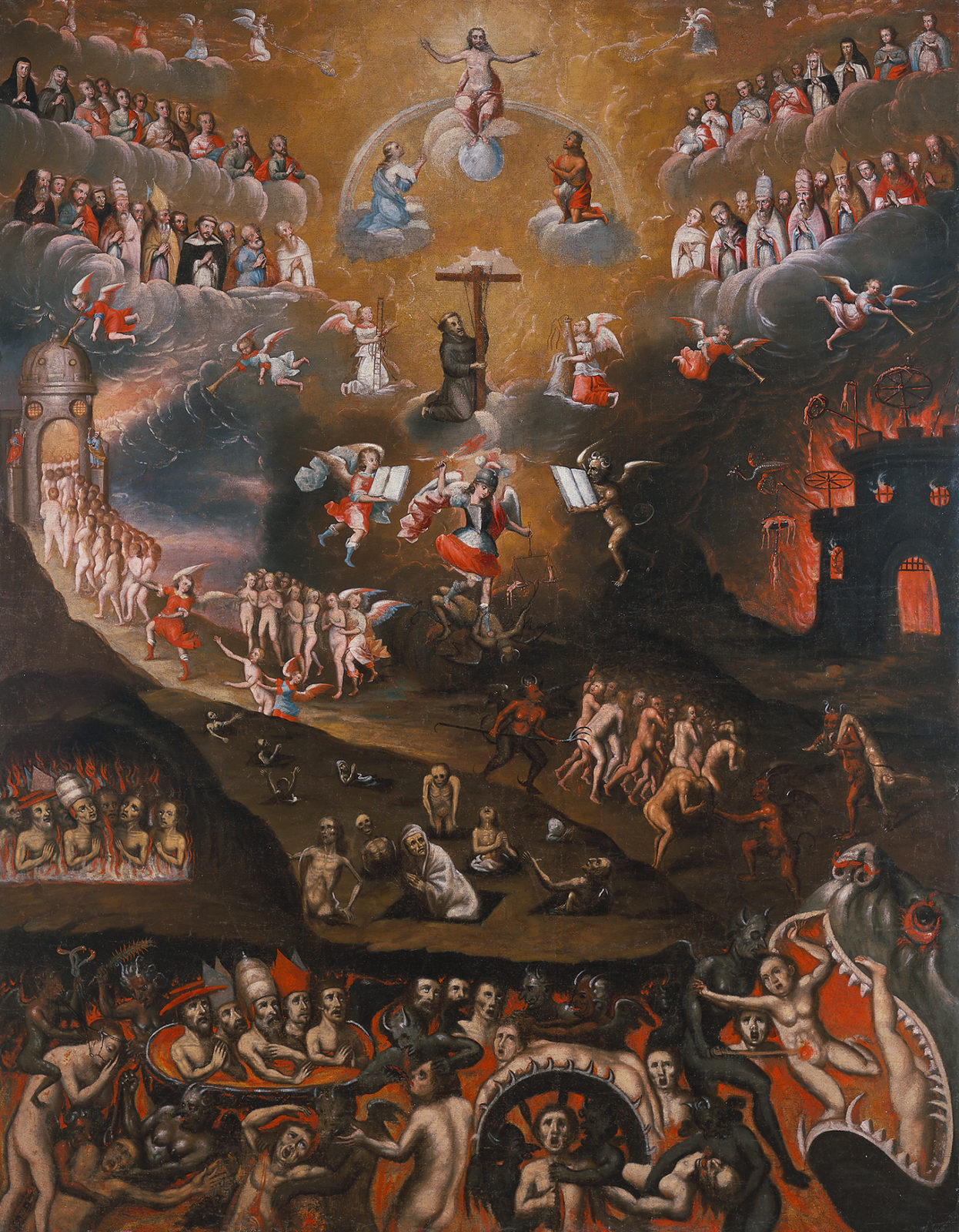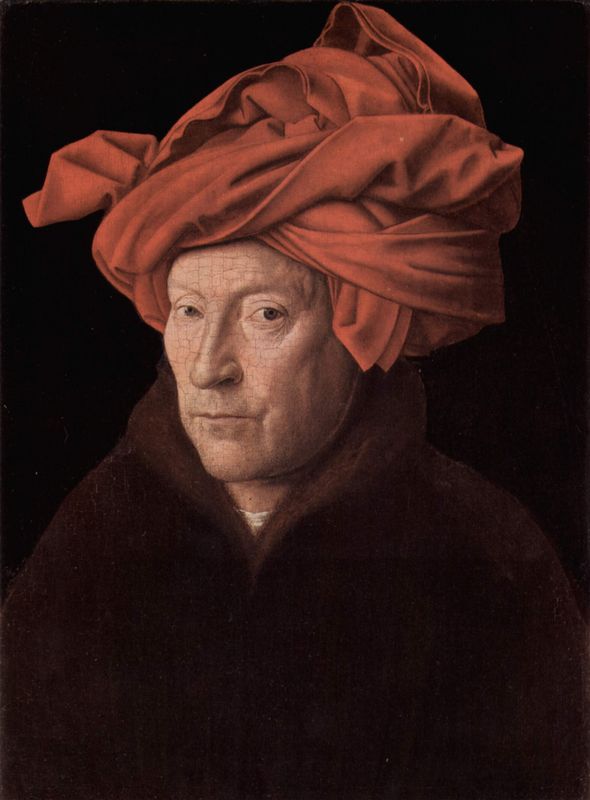
[ E ] Jan van Eyck Last Judgement panel of the diptych (1420s) Detail (Jesus) Jan van eyck
Jan van Eyck's Crucifixion and Last Judgment: Solving a Conundrum € 125,00 EXCL. VAT ISBN: 978-2-503-59690-7 The aim is to rediscover Van Eyck's art—its facture, meaning, and function—within the context of its own time, and with particular regard to the circumstances of the commission. Renaissance painting Illumination & illustration of books

Unlocking the Mysteries of Two Jan van Eyck Frames, Part Five Mysteries Unlocked The
The Crucifixion and Last Judgement diptych (or Diptych with Calvary and Last Judgement) consists of two small painted panels attributed to the Early Netherlandish artist Jan van Eyck, with areas finished by unidentified followers or members of his workshop.

The Last Judgement by Hans Memling
The Last Judgment is part of a diptych (two paintings telling one story). It was created by Netherlandish artist Jan van Eyck with areas later completed by unidentified followers of his workshop. The Last Judgment and its accompanying depiction of The Crucifixion are renowned for its complex and highly detailed artwork. About the artwork

Magic Transistor Jan van eyck, Art history, Baroque art
The Crucifixion and the Last Judgment is an exquisite diptych attributed to the Early Netherlandish artist Jan van Eyck. This artwork was painted during the Northern Renaissance and belongs to the genre of religious paintings. In it, we find two small, painted panels filled with vivid imagery depicting some important elements of Christianity.

Van Eyck Crucifixion Juicio Final Jan van Eyck Wikipedia Arte religiosa, Dipingere idee
Jan van Eyck painted the 'Crucifixion' and 'Last Judgment' panels, now on view at the Met in New York, at the end of his life - Washington Post (Fletcher Fund; The Metropolitan Museum of Art) Jan.

Jan van Eyck and Assistant The Crucifixion; The Last Judgment (33.92ab) Heilbrunn
Perhaps the most remarkable part of the Crucifixion is the astonishing depth of the landscape behind the crosses. Van Eyck applied a splendid spatial perspective. A vertical axis is the key to the composition of the Last Judgment: Christ as judge at the top, and archangel Michael controlling the underworld. Next to Jesus are the virgin Mary and.

The Last Judgment. Hans Memling. between circa 1466 and circa 1473. Jan Van Eyck, Renaissance
Published on June 19, 2020 / Updated on October 14, 2023. Email: [email protected] / Phone: +44 7429 011000. The Last Judgement by Jan van Eyck forms the right hand panel to a two-piece project which Jan van Eyck completed on commission for a private, devotional requirement. He received help from his assistants on both panels, but completed.

The Last Judgment Thoma Foundation
The Crucifixion and Last Judgement diptych (or Diptych with Calvary and Last Judgement) consists of two small painted panels attributed to the Early Netherlandish artist Jan van Eyck. This diptych.

(1) 41 Strange (41Strange) / Twitter Arte horror, Jan van eyck, Arte oculta
The Crucifixion; The Last Judgment Jan van Eyck Netherlandish ca. 1436-38 On view at The Met Fifth Avenue in Gallery 605 Philip the Good, duke of Burgundy, considered Van Eyck—his court painter—unequaled in his "art and science." The artist's expansive yet microcosmic paintings seem observed through both a microscope and a telescope.

Magic Transistor on Tumblr The last judgment, Hans memling, Triptych
Jan van Eyck ( / væn ˈaɪk / van EYEK, Dutch: [ˈjɑɱ vɑn ˈɛik]; c. before 1390 - 9 July 1441) was a painter active in Bruges who was one of the early innovators of what became known as Early Netherlandish painting, and one of the most significant representatives of Early Northern Renaissance art.

The Metropolitan Museum Turns Detective With Jan van Eyck The New York Times
February 19, 2019 Maryan Ainsworth, Curator Emerita, Department of European Paintings Jan van Eyck (Netherlandish, ca. 1390-1441) and Workshop Assistant. The Crucifixion; The Last Judgment, ca. 1440-41. Oil on canvas, transferred from wood, each: 22 1/4 x 7 2/3 in. (56.5 x 19.7 cm).

Altarpiece of the Last Judgement
Met curator Maryan W. Ainsworth on the sense of sound in Jan van Eyck's The Crucifixion; The Last Judgment, c. 1435-40. These exquisite paintings, juxtaposing Christ's sacrifice for the salvation of mankind with the Last Judgment, are by Jan van Eyck, the most celebrated painter of fifteenth-century Europe, and an assistant.
The Language of Looking The Crucifixion; The Last Judgment Jan van Eyck
About the work Jan van Eyck The Crucifixion; The Last Judgment, ca. 1440-1441 Oil on canvas, transferred from wood 22 1/4 × 7 2/3 in | 56.5 × 19.5 cm The Metropolitan Museum of Art New York Get notifications for similar works Want to sell a work by this artist? Sell with Artsy Artist Series Related artists

DANSE MACABRE — The Last Judgement Jan Van Eyck, 143040 Jan Van Eyck, Art Classique
Date: 1430 Medium: Oil on wood transferred to canvas Dimensions: Height: 56.5 cm (22.2 ″); Width: 19.5 cm (7.6 ″) (each) Museum: Metropolitan Museum of Art - MET Jan van Eyck Name: Jan van Eyck Born: 1390 - Maaseik, present-day Belgium

Pin on Hellfire, Death, & Damnation
Jan van Eyck is the most famous member of a family of painters traditionally believed to have originated from the town of Maaseik, in the diocese of Liège. The work of the Van Eycks, epitomized in the Ghent Altarpiece, brought an unprecedented realism to the themes and figures of late medieval art.

Last judgement (diptych panel)
56.5 cm 19.7 cm. Crucifixion and Last Judgement is a Northern Renaissance Oil on Panel Painting created by Jan Van Eyck from 1430 to 1440. It lives at the Metropolitan Museum of Art in New York. The image is in the Public Domain, and tagged Crucifixion, Apocalypse, Death in Art and Skeletons. Source Download See Crucifixion and Last Judgement.